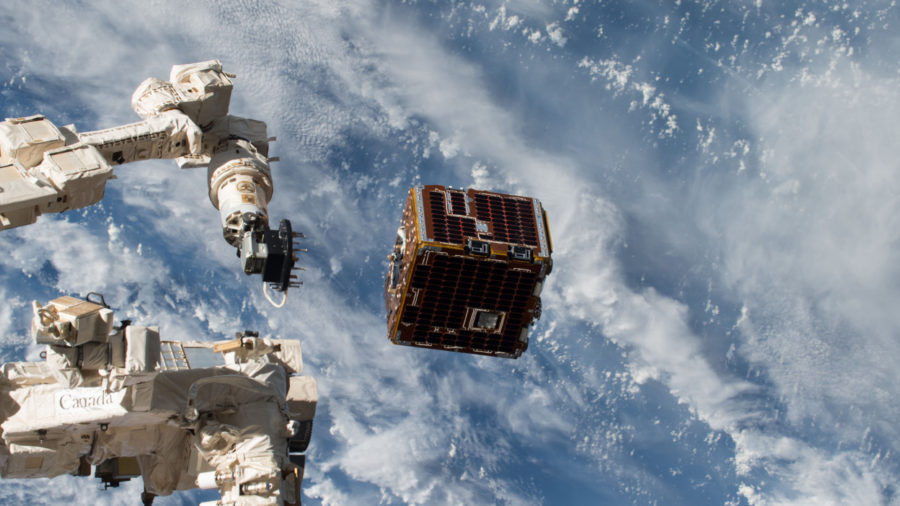Space Junk? So What?
Astronauts deploy the RemoveDEBRIS satellite from the International Space Station. Credit: NASA / Drew Feustel
Humans have been going to space for quite some time now.
The launch of Sputnik in 1957, the first satellite launched, was a major breakthrough. Then, came the Explorer One in 1958. Then the next 55. Then the Vanguards. Then we tried going to the moon. Lunokhod, a Russian rover, made the first successful contact. Then we had animals circle the moon’s orbit to test survivability. Monkeys, tortoises, dogs, everything.
On July 20th 1969, humans accomplished the big goal. The first manned mission to the moon, the Apollo 11. Neil Armstrong, the first man to walk on the moon, planted the American flag. That wasn’t enough. Mars rovers came next. Sojourner, Spirit and Opportunity, Curiosity, and Perseverance. We collected rocks and searched for biological life. Most importantly, we failed. A lot. Many ships exploded, things left drifting in space until they were pulled into the atmosphere. Usually though, they just float. That has led to the 500,000 odd pieces of space trash orbiting us.
Most of this trash is only a few inches in size, luckily. Those aren’t the problem. There are also about 23,000 pieces of junk larger than a softball. That’s definitely not great, but still not a huge problem alone. Satellites can detect these and move them or move themselves to keep anything important from being damaged. The problem is defunct satellites that never came down, and sit in their orbit doing absolutely nothing. They usually collide with others like them, breaking down and making it difficult to retrieve them. The cloud gets bigger as things break apart, and the bigger it gets the more objects are attracted to it.
So what? Who cares if space is getting a bit messy, there’s a lot of it. We’ll be fine. Right? Wrong. Things get very, very fast in space. There’s no air resistance, and the only gravity they have to deal with is what’s keeping them in orbit. So, things build up so much speed that, according to Holger Krag, Head of the European Space Debris Office, “A centimeter long screw could deal as much damage as a hand grenade.” That makes things very complicated. Launching objects into space is expensive and dangerous as is, but when scientists have to avoid anything larger than 5 centimeters in width or else risk a massive amount of damage to their object, things get harder. The International Space Station has faced this problem more than once, with astronauts having to take cover in capsules to avoid the pressure issues.
What is anyone doing about it? As much as they can. Everything that is sent into space is meant to be optimized as best as possible to avoid launching even more debris into our orbit. Note: as little as possible is not zero percent. There’s no real way to eliminate the waste. At best, some debris will eventually fall back into the atmosphere and burn up upon reentry. At worst, it’s estimated that large debris about 8 inches across will increase by 1.5% over 200 years. Not terrible by most standards, but there’s really no way to get them back down. Thankfully, scientists have been thinking about this a lot. A space whip to launch debris out of orbit, nets to pull things down, harpoons and magnets, and building rockets that launch waste clear of earth. Now, this shouldn’t develop into a problem for anyone with a mortal lifespan. For your grandkids though, save some pictures of the stars.



